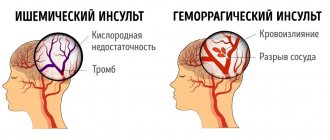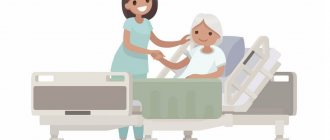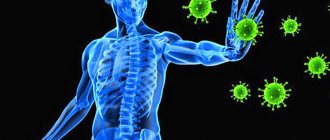The likelihood of developing this condition increases with age. The older a person is, the more likely he is to get sick. After 50 years, the likelihood of developing a stroke doubles every 10 years. But, unfortunately, in recent years there has been a tendency towards “rejuvenation” of this disease throughout the world.
When a vascular accident occurs, half of the patients die without surviving even a year. And only 10% of people after a stroke can return to their usual lifestyle and continue working in the same place. Most patients become disabled and lose the ability to even self-care. The lot of such people becomes a depressive state, a change in the attitude of loved ones towards them, and desocialization.
Therefore, in order to prevent the development of such a serious disease, you should try to prevent its development. Actions aimed at this are called primary prevention. If a person has suffered a stroke, then efforts should be devoted to proper treatment and recovery from the disease. It is recommended to follow certain rules regarding nutrition, lifestyle, and taking certain medications in order to prevent recurrent cerebrovascular accidents.
There are two types of acute conditions associated with circulatory disorders in the cerebral arteries:
- Ischemic stroke. Cerebral infarction develops due to blockage, spasm or compression of blood vessels. Disturbance in the supply of a certain area of the brain parts and structures leads to their atrophy, death and necrotization.
- Hemorrhagic stroke. Formed as a result of damage to the integrity of the vessel wall that supplies the brain, blood flows into its tissues or under the membranes, squeezing neurons. As a rule, this results in swelling of the brain with disruption of the basic functions of the body controlled by the affected area.
Main risk factors
Before talking about what kind of prevention is necessary, you should decide who primarily suffers from acute cerebral ischemia. There are groups of people whose risk of disease is many times higher than others. These are the so-called risk groups. They are divided into controlled and uncontrolled.
It is impossible to change anything if there is a hereditary predisposition, gender (men), or old age. It is these three factors that increase the risk of stroke and are considered uncontrollable.
Controlled factors include the following conditions:
- Hypertension. Persistent and difficult to correct with drugs high blood pressure from 160/90 mm Hg. Art. increases the possibility of stroke by 4 times, and at a pressure of 200/110 mm Hg. 10 times.
- Heart rhythm disturbances. With atrial fibrillation, blood hemodynamics are disrupted. Blood clots that form in the cavities of the heart muscle rush into other vessels and are a common cause of stroke. As a rule, the disease caused by this cause is characterized by severity and a negative prognosis.
- Diabetes. Violations of the rheological properties of blood and changes in the vascular wall with this disease occur 5 times more often.
- Smoking. Promotes the accelerated formation of atherosclerotic changes in the carotid arteries, which causes a 2-fold increase in the possibility of vascular accident.
- Atherosclerosis. High lipid levels are directly related to circulatory problems.
- Alcohol. Regular intake of large doses increases the risk by 3 times.
- Obesity.
- Passive lifestyle.
- The influence of constant stress.
- Diet disorder.
Main stages of prevention
Based on the above factors, it can be understood that primary and secondary prevention of stroke should primarily consist of the following activities:
- detection and timely treatment of episodes of high blood pressure and hypertension;
- paying special attention to patients with heart rhythm disturbances, relief of acute conditions;
- the use of any methods, including surgical intervention, to prevent a recurrent ischemic attack, if there was one in history;
- constant drug correction to normalize blood lipids, especially for patients with coronary artery disease, with disorders of the carotid arteries and cerebral vessels.
Secondary prevention of stroke
Secondary prevention of stroke helps prevent recurrence of the disease and complications after it. Preventive methods to reduce the risk of developing secondary stroke include:
- lowering blood pressure and constant blood pressure monitoring (daily);
- reducing salt intake;
- weight control;
- limited alcohol consumption or its complete elimination;
- following a diet with a predominance of vegetables, fruits and dairy products;
- reducing fat intake;
- physical activity. At least 30 minutes of exercise three times a week;
- statin therapy in patients with signs of atherosclerosis who have had a stroke;
- prescription of drug treatment for IS or TIA;
- constant supervision by a doctor.
Observation by a neurologist will allow you to take timely measures and avoid serious complications. When the first symptoms or signs of a stroke appear, you should seek help from a doctor. The Yusupov Hospital provides the service of medical transportation of the patient from the place of stay to the hospital; in case of a serious condition of the patient, assistance is provided by the resuscitation team. Recovery after a stroke is carried out in the rehabilitation department of the Yusupov Hospital, where exercises are performed to restore motor activity, speech, and all partially lost brain functions. The patient is under constant supervision of medical personnel. Drug therapy aimed at reducing blood pressure and cholesterol levels in the blood, monitoring and timely treatment of chronic inflammatory diseases, and following all doctor’s recommendations will reduce the risk of relapse of the disease. The neurological department of the Yusupov Hospital accepts patients for consultation; you can make an appointment with a neurologist by phone.
Primary prevention
Primary prevention of stroke involves a number of measures to prevent acute circulatory disorders of the brain. The most effective method for this is a complete overhaul of your lifestyle. First of all, this:
- body weight regulation;
- giving up bad habits (alcohol abuse, smoking);
- physical activity.
Since stroke manifests itself primarily as a result of atherosclerosis, diseases associated with the heart valve apparatus or atrial fibrillation, stroke prevention should include the use of the following means:
- The development of atherosclerosis is directly related to the circulation of lipids and cholesterol in the blood.
The deposition of plaques on the internal surfaces of blood vessels blocks their lumen, leading to a decrease in blood flow. When such a plaque breaks off, if it completely blocks the blood flow in the cerebral artery, a stroke occurs. The use of statin therapy (pravastatin, atorvastatin, simvastatin) helps normalize cholesterol metabolism and reduces the risk of vascular accident many times over.
- Drug correction of blood pressure.
With constant use of drugs that stabilize blood pressure, it is possible to successfully prevent stroke, the development mechanism of which in this case is the occurrence of cerebral crisis with aneurysmal changes in cerebral vessels and hemorrhages. For this purpose, various groups of drugs are used: calcium channel blockers, ACE inhibitors, diuretics and others. In each specific case, the doctor selects the dosage depending on blood pressure, the patient’s age and individual tolerance.
- Antithrombolytic therapy.
Most strokes result from areas of cerebral ischemia due to the formation of blood clots inside a vessel. To prevent this phenomenon, there are a number of anticoagulant and antiplatelet drugs. These include heparin, warfarin, clopidogrel, acetylsalicylic acid.
- Timely treatment of chronic pathological processes that can lead to the development of stroke (diabetes mellitus, systemic pathologies, chlamydia).
- The use of folk remedies to reduce blood pressure and normalize metabolism in combination with medications.
It is also important for women, as a preventive measure, to normalize their hormonal levels and treat diseases that contribute to its changes: polycystic ovary syndrome, endometriosis, careful use of hormonal contraceptives (strictly under the supervision of a doctor), especially for premenopausal women and those who abuse smoking.
Secondary prevention of ischemic stroke: prospects and reality
IN
Primary stroke prevention is most relevant in patients who have suffered a minor stroke or transient ischemic attack (TIA). To accurately diagnose an ischemic stroke or TIA, neuroimaging (X-ray computed tomography - CT or magnetic resonance imaging - MRI) is required, without which the error in diagnosis is at least 10%. In addition, additional research methods are required to determine the cause of the first ischemic stroke or TIA [1-5].
Basic instrumental and laboratory research methods
to determine the cause of ischemic stroke or TIA:
— ultrasound duplex scanning (UDS) of the carotid and vertebral arteries;
— ECG;
- General and biochemical blood test.
If they do not reveal possible causes of cerebrovascular pathology (there are no signs of atherosclerotic vascular lesions, cardiac pathology, hematological disorders), further examination is indicated.
Additional instrumental and laboratory research methods
to determine the cause of ischemic stroke or TIA:
— Transthoracic echocardiography;
— Holter ECG monitoring;
— Transesophageal echocardiography;
— Blood test to detect antiphospholipid antibodies;
- Cerebral angiography (if internal carotid or vertebral artery dissection, fibromuscular dysplasia of the carotid arteries, Moya-moya syndrome, cerebral arteritis, aneurysm or arteriovenous malformation are suspected).
Patients who have suffered an ischemic stroke or TIA, against the background of cerebral atherosclerosis, arterial hypertension or cardiac pathology, need non-drug methods of secondary stroke prevention:
- quitting smoking or reducing the number of cigarettes smoked;
- refusal to abuse alcohol;
- hypocholesterol diet;
- reduction of excess weight.
The following therapeutic measures have been proven effective for the prevention of recurrent stroke:
- antiplatelet agents;
- indirect anticoagulants (with a cardioembolic mechanism of stroke or TIA);
- antihypertensive therapy;
— carotid endarterectomy (for stenosis of the internal carotid artery of more than 70% of the diameter).
Antiplatelet drugs occupy one of the leading positions in the secondary prevention of ischemic stroke [1-7].
For secondary prevention of ischemic stroke, the following has been proven effective:
— acetylsalicylic acid from 75 to 1300 mg/day;
— ticlopidine 500 mg/day;
— clopidogrel 75 mg/day;
— dipyridamole in a dose of 225 to 400 mg/day.
A meta-analysis of studies assessing the effectiveness of antiplatelet drugs in patients with ischemic stroke or TIA showed that they reduce the risk of recurrent stroke, myocardial infarction and acute vascular death [7].
Acetylsalicylic acid
for the prevention of cardiovascular diseases (stroke, myocardial infarction and acute vascular death) is used in doses of 30 to 1500 mg per day. It has been established that the incidence of cardiovascular diseases is reduced when taking large doses (500-1500 mg/day) by 19%, when taking medium doses (160-325 mg/day) by 26%, when taking small doses (75-150 mg /day) by 32% [7]. The use of very small doses of acetylsalicylic acid (less than 75 mg/day) is less effective, the incidence of cardiovascular diseases decreases by only 13% [7]. Considering the lower risk of complications from the gastrointestinal tract when using medium and small doses of acetylsalicylic acid, for the prevention of cardiovascular diseases, taking acetylsalicylic acid in doses of 75 to 325 mg/day is optimal [6, 7].
The results of a prospective observation of about 40 thousand patients with ischemic stroke showed that early (in the first two days of stroke) use of acetylsalicylic acid prevents 9 recurrent strokes or deaths in 1000 patients within one month of treatment [10]. The use of acetylsalicylic acid is not contraindicated even in cases where the diagnosis of ischemic stroke is not proven by CT or MRI of the brain and there remains a certain probability (about 5-10%) of intracerebral hemorrhage, since the benefits of using acetylsalicylic acid outweigh the risk associated with possible complications [10].
Therefore, at present, in case of ischemic stroke, it is recommended to prescribe antiplatelet agents from the second day of the disease, which reduces the risk of developing a recurrent stroke and other heart diseases (myocardial infarction, acute vascular death). Treatment in the acute period of ischemic stroke usually begins with a dose of 150-300 mg of acetylsalicylic acid per day, which gives a rapid antiplatelet effect; in the future you can use smaller doses (75-150 mg/day).
In a comparative study of ticlopidine
500 mg/day and acetylsalicylic acid (1300 mg/day), the incidence of recurrent stroke was 48% lower in the group of patients taking ticlopidine than in the group of patients using acetylsalicylic acid during the first year of treatment. Over the entire five-year follow-up period, a reduction in the incidence of recurrent stroke was shown by 24% in the group of patients taking ticlopidine, compared with the group of patients using acetylsalicylic acid [12].
Results of a comparative study of the effectiveness of clopidogrel
and acetylsalicylic acid in patients at high risk of ischemic diseases showed that taking 75 mg of clopidrogel more significantly than taking 325 mg of acetylsalicylic acid reduced the incidence of stroke, myocardial infarction or acute vascular death. A prospective observation of almost 20 thousand patients who had suffered an ischemic stroke, myocardial infarction or had peripheral arterial disease showed that in the group of patients receiving 75 mg of clopidrogel per day, stroke, myocardial infarction or acute vascular death occurred significantly less frequently (5.32% in year) than in the group of patients receiving 325 mg of acetylsalicylic acid (5.83%). The benefit of clopidogrel is most significant in patients at high risk of stroke and other cardiovascular diseases [6,7].
Combination of dipyridamole with acetylsalicylic acid
more effective than acetylsalicylic acid. It has been shown that the combination of dipyridamole 400 mg/day and acetylsalicylic acid 50 mg/day reduces the risk of stroke by 22.1% compared with the prescription of acetylsalicylic acid at a dose of 50 mg/day [11].
Currently, acetylsalicylic acid is the drug of choice among antiplatelet agents for secondary prevention of stroke [1-7]. In cases where acetylsalicylic acid is contraindicated or its use causes side effects, the use of other antiplatelet agents (dipyridamole, ticlopidine) is indicated. Switching to these antiplatelet agents or their combination with acetylsalicylic acid is also recommended in cases where a recurrent ischemic stroke or TIA has developed while taking acetylsalicylic acid.
Indirect anticoagulants
are used for secondary prevention of stroke in patients at high risk of embolic complications [1-5]. Warfarin is prescribed at a dose of 2.5-7.5 mg/day and requires constant monitoring of blood clotting levels to select its optimal dose. A meta-analysis of five studies of the effectiveness of warfarin in patients with atrial fibrillation who had a cardioembolic stroke or TIA showed that with regular use of warfarin, the risk of ischemic stroke was reduced by 68% [8]. However, in some patients the use of anticoagulants is contraindicated, and for some patients it is difficult to regularly monitor the level of blood clotting. In these cases, antiplatelet agents are used instead of indirect anticoagulants.
A comparison of the effectiveness of warfarin and 325 mg of acetylsalicylic acid in patients who suffered atherothrombotic or lacunar stroke did not show any advantage of warfarin over acetylsalicylic acid. Therefore, in this group of patients, the prescription of antiplatelet agents is more justified [7].
A low-fat diet is of particular importance in the prevention of cerebral atherosclerosis and recurrent ischemic stroke
(low cholesterol diet). In cases of hyperlipidemia (increased levels of total cholesterol more than 6.5 mmol/l, triglycerides more than 2 mmol/l and phospholipids more than 3 mmol/l, decreased levels of high-density lipoproteins less than 0.9 mmol/l), a more strict diet is recommended. In cases of severe atherosclerotic damage to the carotid and vertebral arteries, a very low-fat diet (reducing cholesterol intake to 5 mg per day) can be used to prevent the progression of atherosclerosis. If within 6 months of the diet it is not possible to significantly reduce hyperlipidemia, then it is recommended to take antihyperlipidemic drugs (for example, 40 mg of simvastatin) in the absence of contraindications to their use. A meta-analysis of 16 studies evaluating the use of statins showed that long-term use of statins reduced the incidence of stroke by 29% and the mortality from stroke by 28% [5].
Antihypertensive therapy
represents one of the most effective areas of stroke prevention [1-5,9,13,14]. As non-drug methods of treating arterial hypertension, reducing the consumption of table salt and alcohol, reducing excess weight, and increasing physical activity are effective. However, these treatment methods can only provide a significant effect in some patients; in the majority they must be supplemented with antihypertensive drugs.
The effectiveness of antihypertensive therapy in the primary prevention of stroke has been proven by the results of many studies. A meta-analysis of the results of 17 randomized placebo-controlled trials showed that regular long-term use of antihypertensive drugs reduces the incidence of stroke by an average of 35-40% [9].
Currently, the effectiveness of antihypertensive therapy has also been proven in relation to the secondary prevention of stroke [13,14]. It has been shown that long-term (four-year) antihypertensive therapy, based on a combination of the angiotensin-converting enzyme inhibitor perindopril and the diuretic indapamide, reduces the incidence of recurrent stroke by an average of 28% and the incidence of major cardiovascular diseases (stroke, heart attack, acute vascular death) by an average of 26 % [14]. The combination of perindopril (4 mg/day) and indapamide (2.5 mg/day), used for 5 years, prevented 1 recurrent stroke in 14 patients who had suffered a stroke or TIA [14].
Another angiotensin-converting enzyme inhibitor, ramipril, has also been shown to be effective for secondary prevention of stroke [13]. The use of ramipril in patients who have suffered a stroke or have other cardiovascular diseases reduces the incidence of stroke by 32%, the incidence of major cardiovascular diseases (stroke, myocardial infarction, acute vascular death) by 22% [13].
Among surgical methods
For stroke prevention, carotid endarterectomy is most often used [1-5]. Currently, the effectiveness of carotid endarterectomy has been proven for significant (narrowing of 70-99% of the diameter) stenosis of the internal carotid artery in patients who have suffered a TIA or minor stroke. When deciding on surgical treatment, one should take into account not only the degree of carotid artery stenosis, but also the prevalence of atherosclerotic lesions of extra- and intracranial arteries, the severity of coronary artery pathology, and the presence of concomitant somatic diseases. Carotid endarterectomy should be performed in a specialized clinic where the rate of complications during surgery does not exceed 3-5%.
Surgical treatment methods have been used in recent years to prevent stroke and other embolic complications in patients with atrial fibrillation. Blockage of the left atrial appendage is used, the formation of blood clots in which is the cause of more than 90% of cases of cardiocerebral embolism. Surgical closure of a patent foramen ovale is used in patients who have had a stroke or TIA and are at high risk of recurrent embolic complications. To close a patent foramen ovale, various systems are used, delivered into the heart cavity using a catheter.
The main directions of secondary prevention of ischemic stroke can be summarized as indicated in Table 1.
Unfortunately, effective methods of secondary prevention are not fully implemented in everyday practice. Over the past two years, we have analyzed how secondary prevention of stroke is carried out in 100 patients (56 men and 44 women, average age 60.5 years) who suffered one or more ischemic strokes due to arterial hypertension. Relatively regular intake of antihypertensive drugs under blood pressure control was carried out by 31% of patients. Continuous use of antiplatelet agents was observed in 26% of patients. In none of the cases where side effects (mainly gastrointestinal disorders) occurred or recurrent ischemic stroke or TIA developed, the patients were prescribed antiplatelet agents. Only two patients (2%) followed a cholesterol-lowering diet; no statin treatment was carried out. In 12% of cases, there was significant stenosis (more than 70% of the diameter) or blockage of the internal carotid artery on the side of the ischemic stroke, but surgical treatment was not performed in any case.
Thus, at present, for secondary prevention of stroke, the effectiveness of antiplatelet agents, indirect anticoagulants (with a cardioembolic mechanism), antihypertensive therapy, carotid endarterectomy (with stenosis of the internal carotid artery of more than 70% of the diameter) and statins has been proven.
Unfortunately, currently only a small proportion of patients who have suffered a TIA or ischemic stroke receive adequate therapy for secondary stroke prevention. Improving organizational measures for clinical care of patients who have suffered TIA and minor stroke seems to be a promising direction in solving this urgent problem. Literature:
1. Diseases of the nervous system. Guide for doctors // Ed. N.N.Yakhno, D.R.Shtulman. M. Medicine, 2001, TI, p. 231-302.
2. Vibers D.O., Feigin V.L., Brown R.D. // Guide to cerebrovascular diseases. Per. from English M., 1999 - 672 p.
3. Vilensky B.S. // Stroke: prevention, diagnosis and treatment. St. Petersburg, 1999 -336 p.
4. Stroke. Practical guide for the management of patients // C.P. Warlow, M.S. Dennis, J. van Geyn et al. Trans. from English St. Petersburg, 1998 - 629 p.
5. Shevchenko O.P., Praskurnichy E.A., Yakhno N.N., Parfenov V.A. // Arterial hypertension and cerebral stroke. M., 2001 - 192 p.
6. Alberts MJ Secondary prevention of stroke and the expanding role of the Neurologist//Cererovasc. Dis., 2002; 13 (suppl. I): 12-16.
7. Antithrombotic Trialists' Collaboration. Collaborative meta-analysis of randomized trials of antiplatelet therapy for prevention of death, myocardial infarction, and stroke in high risk patients // British Med. J., 2002; 324: 71-86.
8. Atrial Fibrillation Investigators: Risk factors for stroke and efficacy of antithrombotic therapy in atrial fibrillation.Analysis of pooled data from five randomized controlled trials // Arch. Inter. Med. 1994; 154: 1449-1457.
9. Chalmers J., MacMahon S., Anderson C. et al. // Clinician's manual on blood pressure and stroke prevention. Second ed. — London, 2000. -129 p.
10. Chen ZM, Sandercock P., Pan HC, Counsell C., on behalf of the CAST and 1ST Collaborative Groups: Indications for early aspirin use in acute ischemic stroke.A combined analysis of 40,000 randomized patients from the Chinese Acute Stroke Trial and the International Stroke Trial // Stroke 2000; 31:1240-1249.
11. Diener P., Cunha. L., Forbes C. Et al. European Stroke Prevention Study 2. Dipyridamole and acetylsalicylic acid in the secondary prevention of stroke // British Med. J., 1996; 143:1-13.
12. Hass WK, Easton VD, Adams HP Randomized trial comparing ticlopidine hydrochloride with aspirin for the prevention of stroke in high risk patients // W. Engl. I. Med. J. 1989; 321:501-507.
13. The Heart Outcomes Preventions Evaluation Study Investigators: Effects of an angiotensin-converting-enzyme inhibitor, ramipril, on cardiovascular events in high-risk patients // N. Engl. J. Med. 2000; 342:145-153.
14. PROGRESS Collaborative Group. Randomized trial of a perindopril-based blood-pressure-lowering regimen among 6105 individuals with previous stroke or transient ischemic attack // Lancet 2001, 358: 1033-1041.










